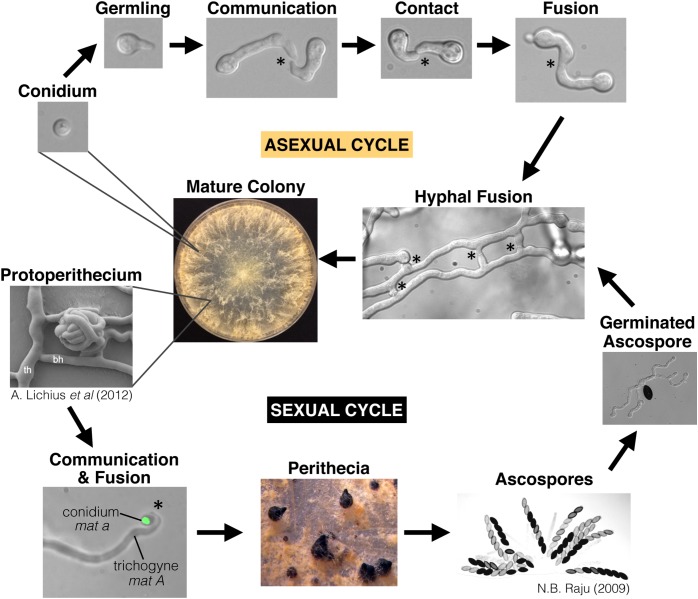FIGURE 1.
The life-cycle of Neurospora crassa. N. crassa is a heterothallic Ascomycete species with a distinct sexual cycle and asexual cycle. Conidia are clonal asexual propagules that can either generate a new colony on their own, or serve as a “male” partner to the “female” trichogyne during mating. The trichogyne is a specialized hypha that emerges from the protoperithecium and chemotropically grows toward a conidium of opposite mating type (shown here expressing H1-GFP). Ascospores are the result of meiosis, which occurs inside the perithecium. This lifecycle specifically highlights chemotropic interactions and cell fusion events. Stars indicate chemotropic interactions and fusion. Germlings, hyphae, and the trichogynes all undergo chemotropism and cell fusion. Protoperithecium image is from Lichius et al. (2012b), and the image showing many ascospores is from Raju (2009), with permission.

